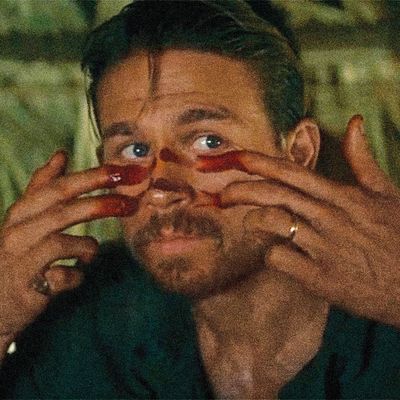
First, let’s be clear that most of the characters in The Lost City of Z are Brits, which means the Z is pronounced “Zed” rather than “Zee,” you Yankee ignoramus. Saying “Zed” is important, I think, because it points up the stark contrast between the film’s principal settings: early-20th-century England, which is musty and high-toned and reeking of pretension, and the Amazon jungle, which is verdant and buggy and reeking of decay, both vegetal and human. Early on, the English explorer Percy Fawcett (Charlie Hunnam) learns that deep in those perilous South American forests there might — might — be the remnants of a lost civilization, the existence of which endangers the unobliging noblesse of his colonialist superiors. (They sent him there to prevent a border war that would threaten the empires of sundry rubber barons.) Surely savages, his countrymen cry, couldn’t have had an advanced culture before the English! For Fawcett, proof of such a city would not only secure his fame and fortune. It would deal a blow to an aristocracy that cast him out after his father’s disgrace. He would advance on the basis of his mettle rather than his ancestry.
The Lost City of Z(ed) was first a book by David Grann, who framed Fawcett’s life as a mystery to be filled in with his own investigation. Director and screenwriter James Gray has opted to tell the story without a mediating modern journalist, inventing what he doesn’t know and changing the dramatic emphasis. Gray’s other films (among them We Own the Night and The Immigrant) center on families or surrogate families whose loyalties are tested and affirmed. So rather than blindly obsessed adventurer, this Fawcett is a torn husband and father, guilty over his abandonment of his wife, Nina (Sienna Miller), and three children. His oldest, Jack (played as a young man by Tom Holland), is plainly bereft, which leads to a final act in which father and son cement their connection to each other and the universe. It’s a strange turn for a movie like this — both terrible and moving.
The Lost City of Z(ed) isn’t as expansive as you might initially wish but still pulls you in and along. Fawcett’s aide-de-camp, Henry Costin, is played by Robert Pattinson behind a full beard and spectacles, and he gives the river scenes a contemplative quality, somewhat like Mr. Spock. The air is filled with cacophonous birdcalls and sounds that can’t be identified or placed. Arrows fly out of the trees and kill members of the expedition, but the tribesmen — even the cannibalistic ones — seem less malevolent than ruled by instinct. A tribe might eat you or feed you — you never know. When a rich man (Angus Macfadyen) who boasts that he accompanied the polar explorer Shackleton bullies his way onto the second voyage, he succumbs most of all to the uncertainty. He wants to sue Fawcett for an apology. The movie has a more familiar piece of absurdism: a rubber baron (Franco Nero) who has built an opera house and dominates the indigenous people by force. The whip scars on the natives’ backs tell the story. You know the opera house will be gone in a relative instant, overwhelmed by the wilderness it crassly attempts to ennoble.
Gray has an unusual temperament for a film like this, humbled rather than stirred. Until the finale, he doesn’t charge the landscape with mysticism the way such would-be visionaries as Werner Herzog and Francis Ford Coppola do. He doesn’t seem to identify with Fawcett’s monomania — or perhaps Hunnam is more buttoned-up than Gray’s usual alter ego, the feverishly unstable Joaquin Phoenix. The film’s most dominant personality is, incredibly enough, Sienna Miller in the standard role of the stick-in-the-mud female who says “Think of your family” or, failing to domesticate her man, “Be careful.” Miller gives her pleas and remonstrations dramatic force — you believe her when she says she wants to accompany her husband. She’s also the only actor with whom Gray has intimacy. The camera doesn’t photograph her from the side and she has no beard or glasses.
It’s worth adding that we should treasure the visionary-but-reckless-explorer genre while it still exists, given that it’s too early in the life span of Earthlings for tales of real-life space exploration and too late for contemporary stories of going where no white person has gone before. The makers of Kong: Skull Island had to set their film in the early 1970s because the coming of satellites meant the end of the “uncharted” island. Besides, indigenous cultures are all but gone, as jungles are denuded and the poles shrink into puddles. We might soon be nostalgic for the days when we were mauled by tigers or eaten by cannibals.
*This article appears in the April 3, 2017, issue of New York Magazine.


